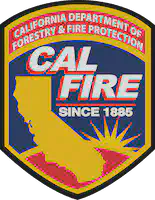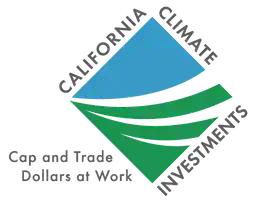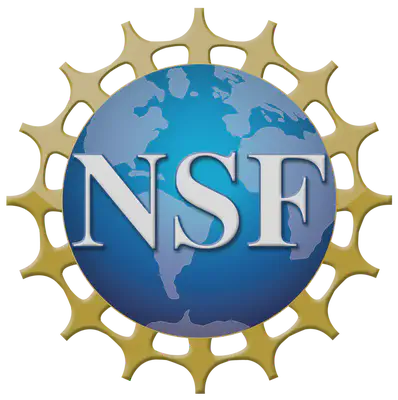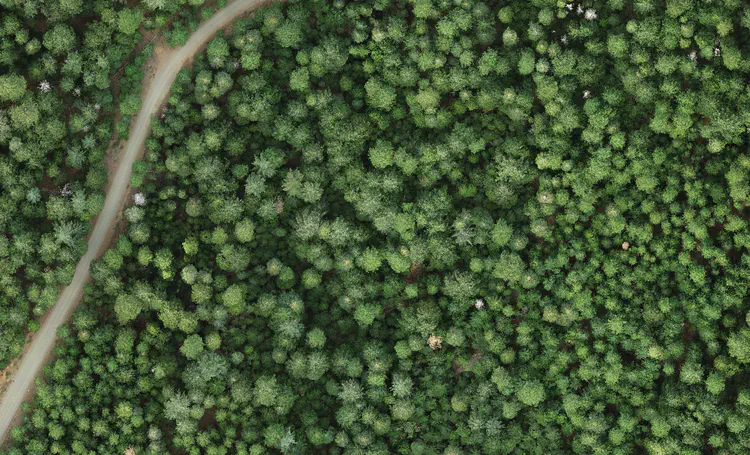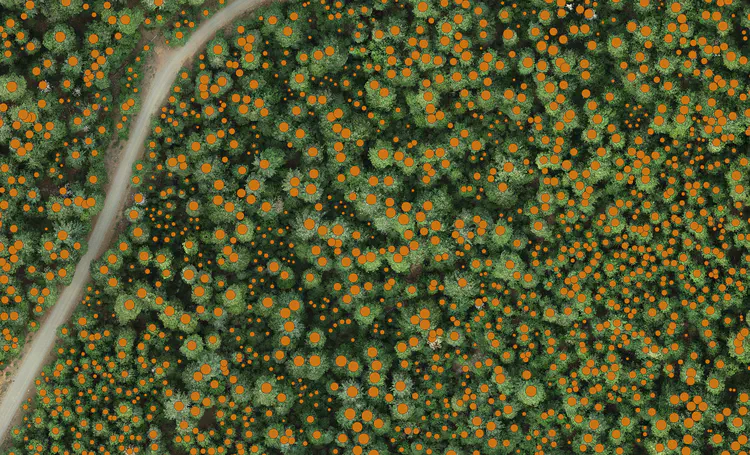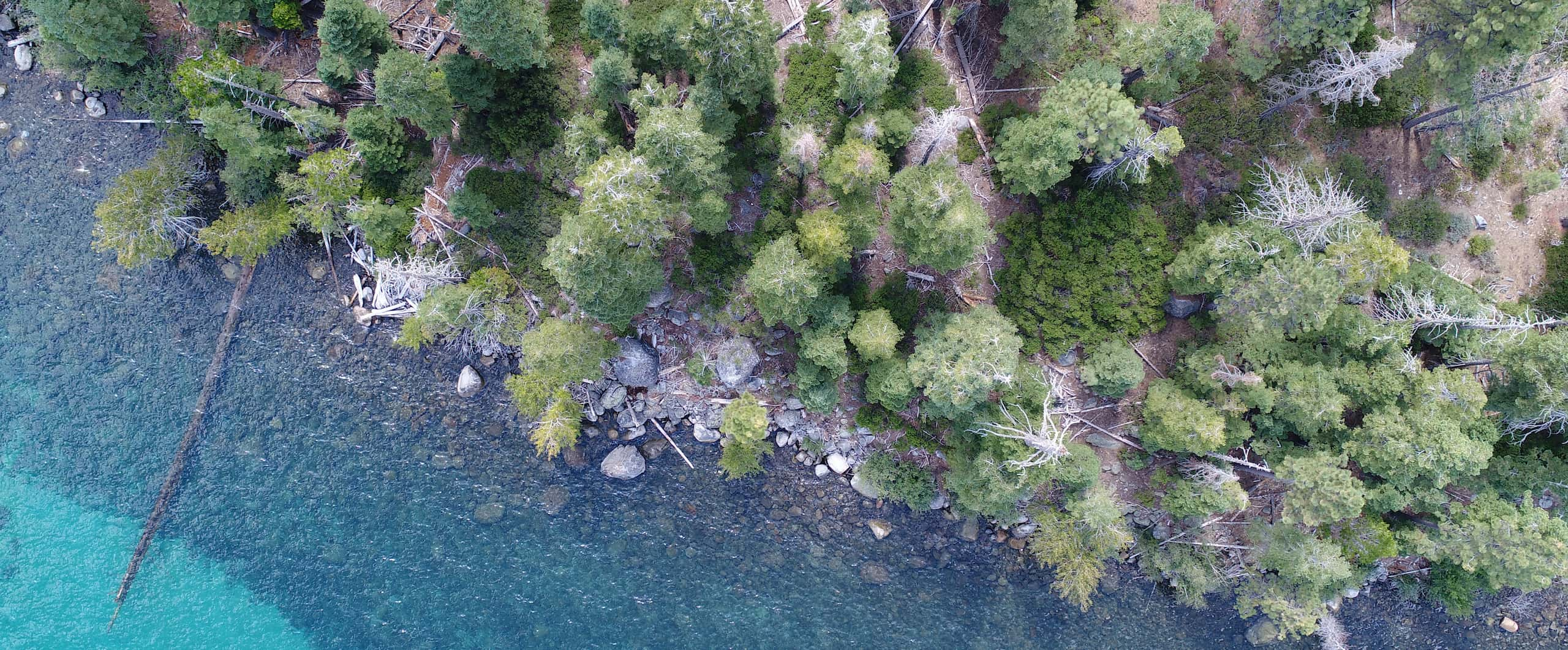 Emerald Point, Lake Tahoe, USA
Emerald Point, Lake Tahoe, USADrone-based forest mapping
Our tree mapping work supports the Open Forest Observatory.
We are developing an open-source, automated workflow for producing high-accuracy, spatially extensive (10-300 ha) maps of forest stands at the individual tree level using drone imagery. Potential applications of these maps include planning post-fire reforestation treatments, developing thinning and prescribed fire prescriptions, and inventorying carbon stocks. Our workflow enables mapping of about 50 ha (125 acres) of forest area in less than 2 days of a single technician’s time (including collection of drone imagery using a single consumer drone and imagery processing). The workflow has several steps:
1. Image collection and photogrammetry
We collect many partially overlapping drone photos across the site. This means any given tree appears in many photos, each from a slightly different angle.
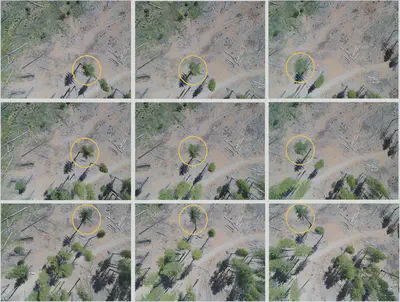
Because each tree is visible from multiple angles, it is possible to use methods related to stereo vision (specifically, photogrammetry) to estimate each tree’s 3D structure. The photogrammetry algorithm produces a 3D cloud of points that is very similar to lidar data.
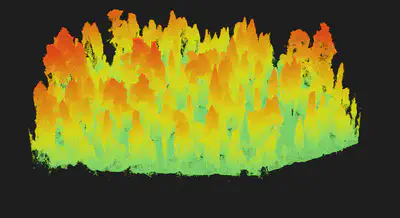
The photogrammetry algorithm is also used to produce an orthomosaic, which is a high-resolution aerial image produced by stitching together the numerous drone photos. It resembles NAIP or Google Earth imagery but is generally much higher resolution (~ 3 cm).
Photogrammetric processing requires parameterization for the specific application. We have thoroughly tested parameterizations for individual tree detection in structurally complex conifer forests and published our results, including recommended parameter values, in Methods in Ecology and Evolution. We have also built and continue to maintain a software library that makes it easy to run multiple photogrammetry workflows with pre-specified parameterizations in a documented, reproducible way.
2. Canopy height model (CHM) production
After creation of a point cloud, we process it to compute a digital surface model (DSM). The DSM is a high-resolution (~10-cm) raster indicating the elevation of the vegetation (or ground) surface in each pixel. Then, we subtract elevation values from a high-resolution digital elevation model (DEM). The result is a canopy height model (CHM) indicating the height of the vegetation above the ground in each pixel.
3. Tree detection
Next, using an algorithm such as (a) the variable-window filter implemented in the ForestTools R package or (b) DeepForest with some post-processing, we detect individual tree tops, and their associated heights, from the canopy height model. The selection and parameterization of the optimal tree detection algorithm is a complex process and can depend on the approach used for drone imagery collection and processing. We have evaluated the interactions between these choices and identified a an accurate tree detection method and parameterization for structurally complex conifer forests. The results are published in Methods in Ecology and Evolution.
4. Tree species identification
After identifying the locations and sizes of individual trees, the next step is to identify each tree taxonomically. We are building an AI-based computer vision approach to classify the drone-derived images of each tree into species categories. We take advantage of the fact that each tree appears in dozens to hundreds of individual drone images, often from side angles, allowing us to use the multiple viewing angles to more confidently identify the tree to species. This approach is known as multi-view computer vision.
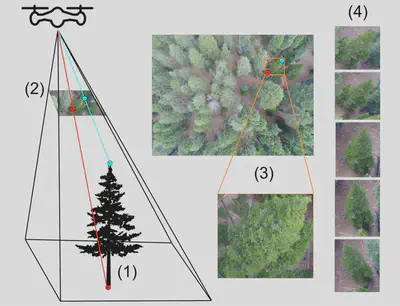
To translate between raw drone images (which are not geospatial) and the geosptaial mapping products such as the orthomosaic, we have developed the open-source and user-friendly Multiview Mapping Toolkit. Using this software, a geospatial map (e.g. of species identities) can be projected onto the raw drone images and used (for example) for training a computer vision algorithm to identify tree species (or detect trees) using the raw drone images. Similarly, if one has tree species identities annotated on the raw drone images (e.g., the result of running computer vision inference on the images), the MVMT can project these annotations onto the geospatial layers (e.g. orthomosaic) for mapping purposes.
Call for collaborators
We welcome collaborations to develop forest mapping methods and tools. In particular, we are interested incorporating any large (> 0.25 ha) field-based forest inventory plot data for development, testing, and training of our forest mapping workflows. If you are interested in collaborating, contact us or visit the Open Forest Observatory for more details on the effort.
Funding and support
